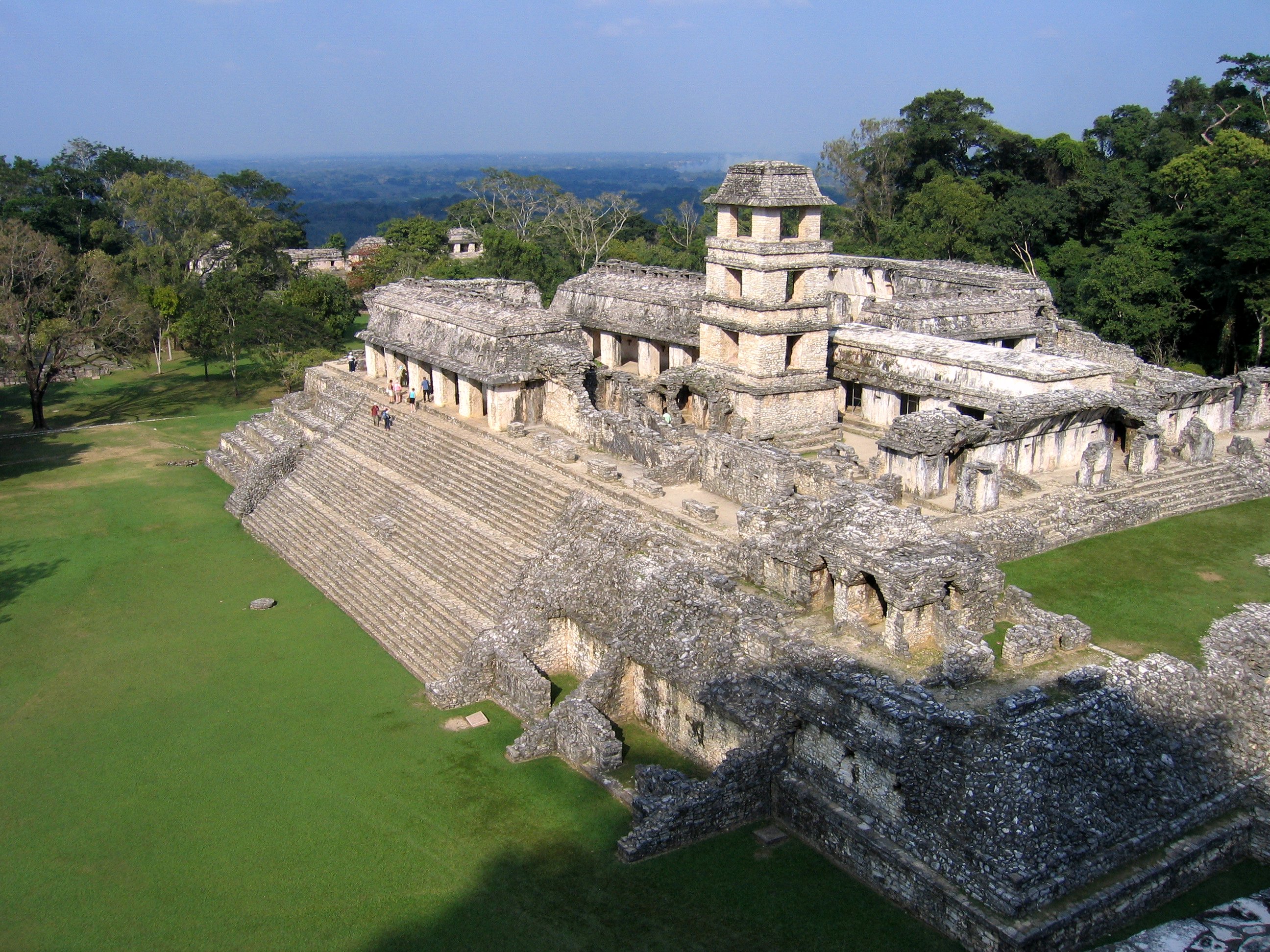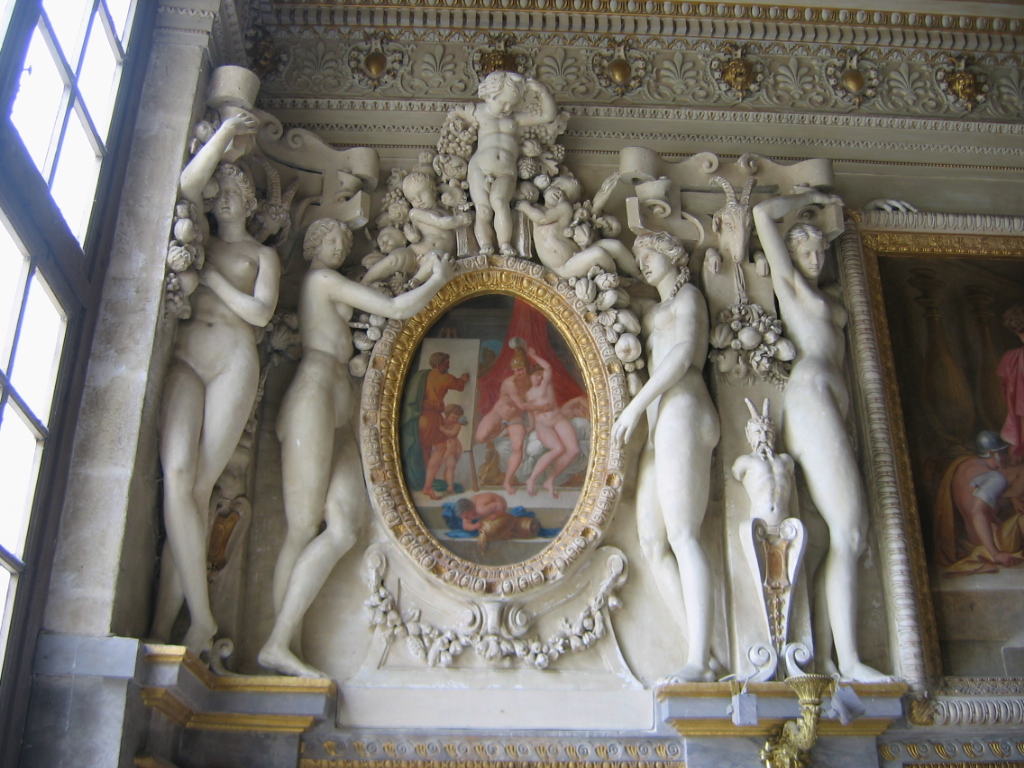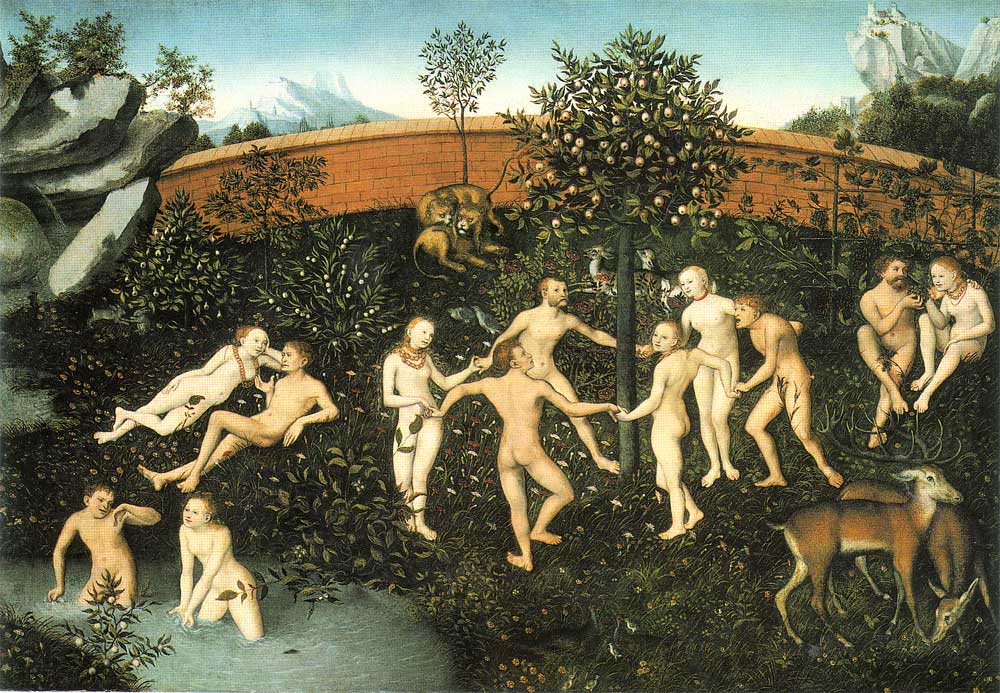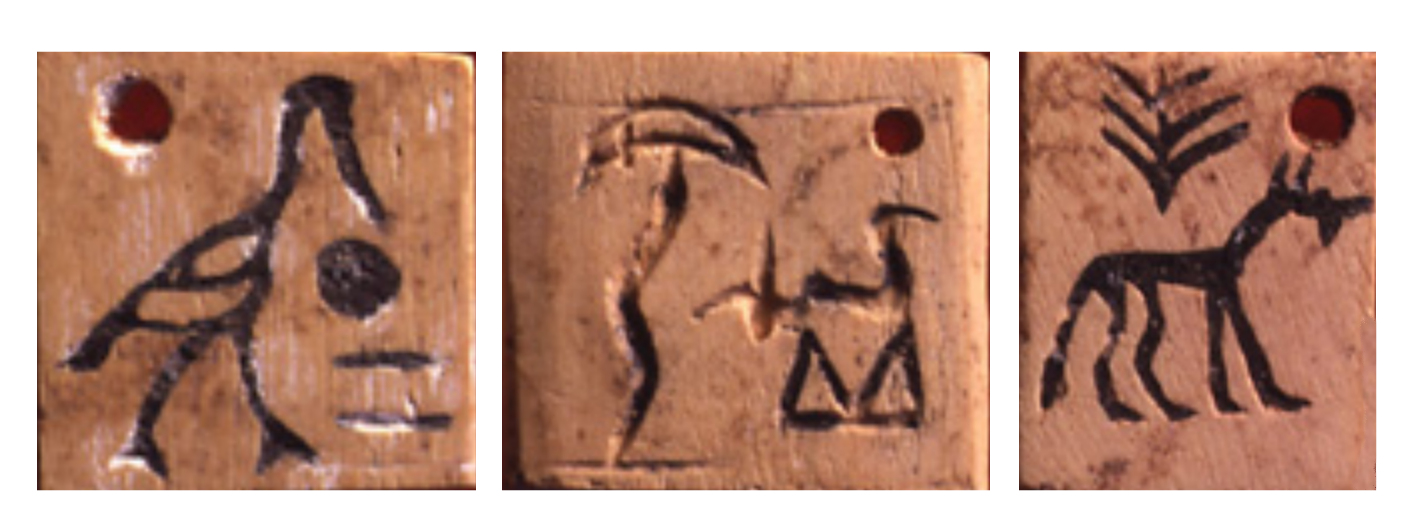|
Roof Comb
The roof comb (or roof-comb) is the structure that tops a pyramid in monumental Mesoamerican architecture. Typically, the roof combs crowned the summit of pyramids and other structures; they consisted of two pierced framework walls which leaned on one another. This framework was covered by plaster decorated with artist depictions of gods or important rulers. Examination of the sections and iconography of Maya civilization roof-combs indicates that each icon had specific sacred meanings. History and significance The Mayans engineered some of the most important monuments in Mesoamerica. Their civilization experienced its ‘ golden age’ between 500 and 900 AD. Recent deciphering of Maya hieroglyphs has brought new understanding to their architecture; these pictographic symbols tell historians about when specific structures were built and by whom. In Mayan religious architecture there was an emphasis on height, which was often manifested by vertiginous staircases that reac ... [...More Info...] [...Related Items...] OR: [Wikipedia] [Google] [Baidu] |
Mesoamerican Architecture
Mesoamerican architecture is the set of architectural traditions produced by pre-Columbian cultures and civilizations of Mesoamerica, traditions which are best known in the form of public, ceremonial and urban monumental buildings and structures. The distinctive features of Mesoamerican architecture encompass a number of different regional and historical styles, which however are significantly interrelated. These styles developed throughout the different phases of Mesoamerican history as a result of the intensive cultural exchange between the different cultures of the Mesoamerican culture area through thousands of years. Mesoamerican architecture is mostly noted for its pyramids, which are the largest such structures outside of Ancient Egypt. One interesting and widely researched topic is the relation between cosmovision, religion, geography, and architecture in Mesoamerica. Much seems to suggest that many traits of Mesoamerican architecture were governed by religious and mythol ... [...More Info...] [...Related Items...] OR: [Wikipedia] [Google] [Baidu] |
Pyramids
A pyramid () is a Nonbuilding structure, structure whose visible surfaces are triangular in broad outline and converge toward the top, making the appearance roughly a Pyramid (geometry), pyramid in the geometric sense. The base of a pyramid can be of any polygon shape, such as triangular or quadrilateral, and its surface-lines either filled or stepped. A pyramid has the majority of its mass closer to the ground with less mass towards the pyramidion at the Apex (geometry), apex. This is due to the gradual decrease in the cross-sectional area along the vertical axis with increasing elevation. This offers a weight distribution that allowed early civilizations to create monumental structures.Ancient Civilization, civilizations in many parts of the world pioneered the building of pyramids. The largest pyramid by volume is the Mesoamerican Great Pyramid of Cholula, in the Mexican state of Puebla. For millennia, the List of largest buildings in the world, largest structures on Earth ... [...More Info...] [...Related Items...] OR: [Wikipedia] [Google] [Baidu] |
Plaster
Plaster is a building material used for the protective or decorative coating of walls and ceilings and for moulding and casting decorative elements. In English, "plaster" usually means a material used for the interiors of buildings, while "render" commonly refers to external applications. The term stucco refers to plasterwork that is worked in some way to produce relief decoration, rather than flat surfaces. The most common types of plaster mainly contain either gypsum, lime, or cement,Franz Wirsching "Calcium Sulfate" in Ullmann's Encyclopedia of Industrial Chemistry, 2012 Wiley-VCH, Weinheim. but all work in a similar way. The plaster is manufactured as a dry powder and is mixed with water to form a stiff but workable paste immediately before it is applied to the surface. The reaction with water liberates heat through crystallization and the hydrated plaster then hardens. Plaster can be relatively easily worked with metal tools and sandpaper and can be moulded, either on ... [...More Info...] [...Related Items...] OR: [Wikipedia] [Google] [Baidu] |
Maya Civilization
The Maya civilization () was a Mesoamerican civilization that existed from antiquity to the early modern period. It is known by its ancient temples and glyphs (script). The Maya script is the most sophisticated and highly developed writing system in the pre-Columbian Americas. The civilization is also noted for its art, architecture, mathematics, calendar, and astronomical system. The Maya civilization developed in the Maya Region, an area that today comprises southeastern Mexico, all of Guatemala and Belize, and the western portions of Honduras and El Salvador. It includes the northern lowlands of the Yucatán Peninsula and the Guatemalan Highlands of the Sierra Madre, the Mexican state of Chiapas, southern Guatemala, El Salvador, and the southern lowlands of the Pacific littoral plain. Today, their descendants, known collectively as the Maya, number well over 6 million individuals, speak more than twenty-eight surviving Mayan languages, and reside in nearly the s ... [...More Info...] [...Related Items...] OR: [Wikipedia] [Google] [Baidu] |
Mesoamerica
Mesoamerica is a historical region and cultural area that begins in the southern part of North America and extends to the Pacific coast of Central America, thus comprising the lands of central and southern Mexico, all of Belize, Guatemala, El Salvador, and parts of Honduras, Nicaragua and northwestern part of Costa Rica. As a cultural area, Mesoamerica is defined by a mosaic of cultural traits developed and shared by its indigenous cultures. In the pre-Columbian era, many Indigenous peoples of the Americas, indigenous societies flourished in Mesoamerica for more than 3,000 years before the Spanish colonization of the Americas began on Hispaniola in 1493. In world history, Mesoamerica was the site of two historical transformations: (i) primary urban generation, and (ii) the formation of New World cultures from the mixtures of the indigenous Mesoamerican peoples with the European, African, and Asian peoples who were introduced by the Spanish colonization of the Americas. Mesoameri ... [...More Info...] [...Related Items...] OR: [Wikipedia] [Google] [Baidu] |
Golden Age (metaphor)
A golden age is a period considered the peak in the history of a country or people, a time period when the greatness, greatest achievements were made. The term originated from early ancient Greece, Greek and ancient Rome, Roman poets, who used it to refer to a time when mankind lived in a better time and was pure (see Golden Age). The ancient Greek poet Hesiod introduced the term in his ''Works and Days'', when referring to the period when the "Golden Race" of man lived. This was part of fivefold division of Ages of Man, starting with the Golden age, then the Silver Age, the Bronze Age, the Greek Heroic Age, Age of Heroes (including the Trojan War), and finally, the current Iron Age. The concept was further refined by Ovid, in his ''Metamorphoses'', into the four "metal ages" (golden, silver, bronze, and iron). The Golden age in Classic literature The Golden age as described by Hesiod was an age where all humans were created directly by the Olympian gods. They lived long lives ... [...More Info...] [...Related Items...] OR: [Wikipedia] [Google] [Baidu] |
Hieroglyphs
Ancient Egyptian hieroglyphs ( ) were the formal writing system used in Ancient Egypt for writing the Egyptian language. Hieroglyphs combined ideographic, logographic, syllabic and alphabetic elements, with more than 1,000 distinct characters.In total, there were about 1,000 graphemes in use during the Old Kingdom period; this number decreased to 750–850 during the Middle Kingdom, but rose instead to around 5,000 signs during the Ptolemaic period. Antonio Loprieno, ''Ancient Egyptian: A Linguistic Introduction'' (Cambridge: Cambridge UP, 1995), p. 12. Cursive hieroglyphs were used for religious literature on papyrus and wood. The later hieratic and demotic Egyptian scripts were derived from hieroglyphic writing, as was the Proto-Sinaitic script that later evolved into the Phoenician alphabet. Egyptian hieroglyphs are the ultimate ancestor of the Phoenician alphabet, the first widely adopted phonetic writing system. Moreover, owing in large part to the Greek and Aramaic scripts ... [...More Info...] [...Related Items...] OR: [Wikipedia] [Google] [Baidu] |
Temples
A temple (from the Latin ) is a place of worship, a building used for spiritual rituals and activities such as prayer and sacrifice. By convention, the specially built places of worship of some religions are commonly called "temples" in English, while those of other religions are not, even though they fulfill very similar functions. The religions for which the terms are used include the great majority of ancient religions that are now extinct, such as the Ancient Egyptian religion and the Ancient Greek religion. Among religions still active: Hinduism (whose temples are called Mandir or Kovil), Buddhism (whose temples are called Vihar), Sikhism (whose temples are called gurudwara), Jainism (whose temples are sometimes called derasar), Zoroastrianism (whose temples are sometimes called Agiary), the Baháʼí Faith (which are often simply referred to as Baháʼí House of Worship), Taoism (which are sometimes called Daoguan), Shinto (which are often called Jinja), Confu ... [...More Info...] [...Related Items...] OR: [Wikipedia] [Google] [Baidu] |
Maya Society
Maya society concerns the social organization of the Pre-Hispanic Maya, its political structures, and social classes. The Maya people were indigenous to Mexico and Central America and the most dominant people groups of Central America up until the 6th century. In the Neolithic Age, Maya society has contributed to the fields of astronomy, mathematics, agriculture, art and writing. The Mayans would peak as a civilization between 250 - 900 AD. This included complex cities, social life, and politics. Mayan civilization began to decline after this time period, and remaining Mayans would revert to more of a hunter-gatherer society. These remaining tribes would eventually be conquered by Europeans in the 1500s. The Maya lived in Mesoamerica, concentrated in the Yucatán Peninsula, the Peten district of northern Guatemala and southern Mexico. The Maya reached the height of their civilization during the Classic Period of Maya civilization (A.D 250 to 900) before a decline starting about 90 ... [...More Info...] [...Related Items...] OR: [Wikipedia] [Google] [Baidu] |
Corbel Arch
A corbel arch (or corbeled / corbelled arch) is an arch-like construction method that uses the architecture, architectural technique of corbeling to span a space or void in a structure, such as an entranceway in a wall or as the span of a bridge. A corbel vault uses this technique to support the superstructure of a building's roof. A corbel arch is constructed by offsetting successive horizontal courses of stone (or brick) beginning at the springline of the walls (the point at which the walls break off from verticality to form an arc toward the apex at the archway's center) so that they project towards the archway's center from each supporting side, until the courses meet at the apex of the archway (often the last gap is bridged with a flat stone). For a corbeled vault covering, the technique is extended in three dimensions along the lengths of two opposing walls. Although an improvement in load-bearing efficiency over the post and lintel design, corbeled arches are not entirely ... [...More Info...] [...Related Items...] OR: [Wikipedia] [Google] [Baidu] |






